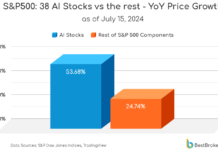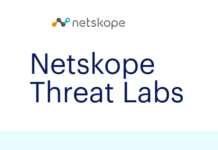
The global smart wearables market for oil & gas industry was valued at ~US$ 2.3 Bn in 2018 and is anticipated to expand at a CAGR of ~12% during the forecast period. Among device types, the smart watches segment held a dominant share of the global smart wearables market for oil & gas industry in 2018, primarily due to various qualities of smart watches.
Among applications, the upstream segment constituted a significant share of the global smart wearables market for oil & gas industry in 2018, owing to the high risk factor associated with working in the upstream process. Upstream locations are remote and isolated, wherein use of smart wearables can avoid major accidents, owing to their predictive analytics properties. Hence, the demand for smart wearables is expected to increase in the upstream segment during the forecast period.
The smart wearables market for oil & gas industry in North America is likely to expand at a substantial pace during the forecast period, owing to high investments in exploration and production activities in the oil & gas industry in the region.
Key Drivers of Smart Wearables Market for Oil & Gas Industry
After the 2014 fall in prices of crude oil and natural gas, investments in the global oil & gas industry dropped significantly in 2015. However, after 2016, investments have been increasing gradually, due to steady demand for oil and gas products worldwide. Spending on oil and gas exploration rose by 20% in 2018, as 140 new reserves of oil and gas were discovered. The total estimate for discovered resources was around 9 billion barrels of oil equivalent in 2018, which was 10 billion barrels of oil equivalent in 2017. In these, offshore discoveries were prominent with 70% share of the volumes found, while gas resources accounted for about 40% share. In terms of discovery, Latin America is the leading region, holding 24% share of the global volumes discovered, which stand at around 2.1 billion barrels of oil equivalent. North America and Europe collectively hold 15% share of the global volumes discovered, which stand at 1.3 billion barrels of oil equivalent. Asia Pacific held 11% share, while Middle East & Africa held 9% share of the global volumes discovered in 2018.
Rising investments in the exploration and production of oil and gas are expected to boost the global oil & gas industry in the near future. This, in turn, is projected to drive the global smart wearables market for oil & gas industry during the forecast period.
North America to Lead Smart Wearables Market for Oil & Gas Industry
North America dominated the global smart wearables market for oil & gas industry in 2018 and the trend is expected to continue during the forecast period, owing to significant implementation of AI- and IoT-based systems in the oil and & gas industry in the region. Demand for smart wearables is expected to be high in the region during the forecast period. The smart wearables market for oil & gas industry in North America is estimated to expand considerably during the forecast period, led by the significant development of oil and gas infrastructure in the region. The U.S. accounted for a leading share of the smart wearables market for oil & gas industry in North America in 2018. This can be primarily ascribed to the increase in awareness about safety and security of workers in the country. High investments in oil and gas exploration and production in the U.S. are estimated to drive the smart wearables market for oil & gas industry in the country during the forecast period. The smart wearables market for oil & gas industry in Canada is projected to expand at a moderate pace in the next few years, owing to modernization of oil and gas processes with the help of IoT- and AI-based systems in the oil & gas industry in the country.
Major Developments in Smart Wearables Market for Oil & Gas Industry
In November 2019, Ansell Ltd, a global leader in safety solutions, announced to have entered into a partnership with ProGlove, a leading provider of industrial wearables, to develop hand protection solutions by using the IoT or AI technology to ensure correct personal protective equipment compliance in workplaces. This cooperation facilitated use of innovations in Industrial Internet of Things (IIoT) in scaling Ansell PPE to create a safe work environment.
In November 2019, Google announced that it had acquired Fitbit Inc., a leading manufacturer of smart wearables in the world, for around US$ 2.1 Bn. Fitbit Inc. is headquartered in San Francisco, California, the U.S. Its products include activity trackers and wireless-enabled wearable technology devices that measure data such as the number of steps walked, heart rate, quality of sleep, steps climbed, and other personal metrics associated with fitness. The acquisition is expected to help Google enhance its reach and gain higher share in the global smart wearables market for oil & gas industry.
Competition Landscape
The global smart wearables market for oil & gas industry is led by multinational players. Prominent players functioning in the global smart wearables market for oil & gas industry are Honeywell International Inc., TOSHIBA CORPORATION, 3M, Alphabet Inc., Apple Inc., SAMSUNG ELECTRONICS CO., LTD, and FUJITSU

















